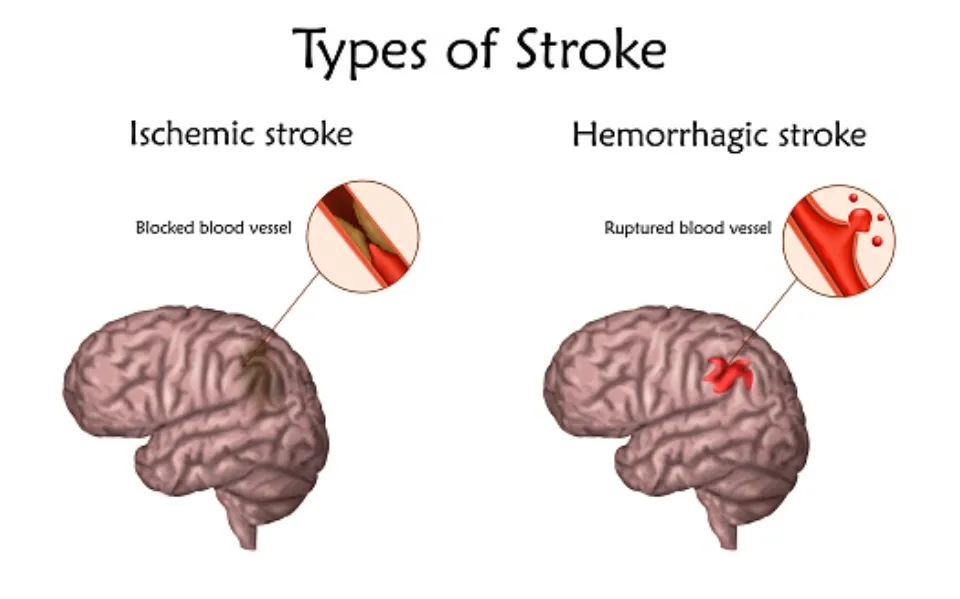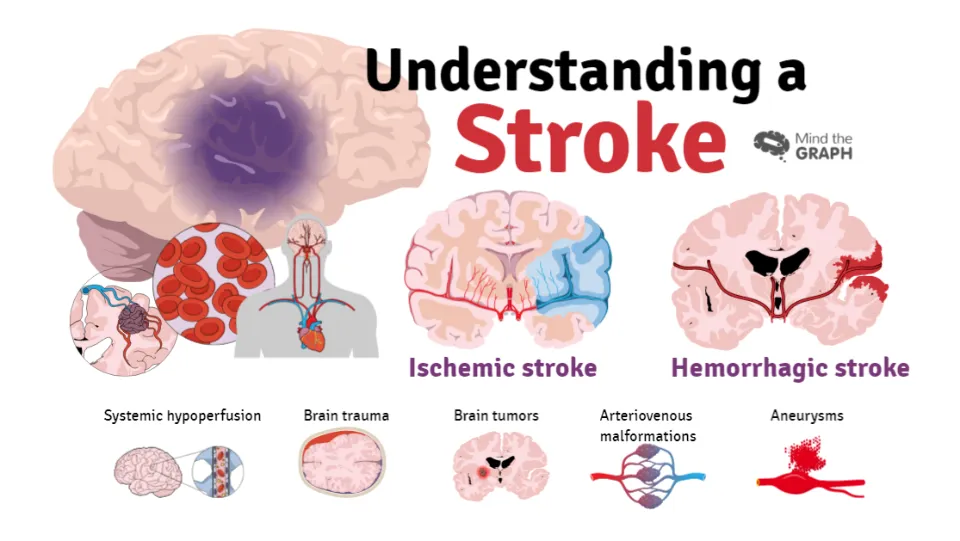Blood can pool and flow more slowly than normal as a result of atrial fibrillation (AFib), a type of irregular heartbeat. This may lead to a blood clot, which might result in a stroke.
This article explores the connections between AFib and stroke and how does AFib cause stroke. It also looks at AFib and stroke treatment and prevention.
Read more: How Dangerous is AFib in Elderly: Alert! – Elder VIP
An Overview of AFib
Your risk of having a stroke increases if you have atrial fibrillation, a heart rhythm issue.
Your chance of having a stroke increases fivefold if you have AF. To ensure that you receive the best care and guidance for you if you are diagnosed with AF, you will undergo an individual stroke risk assessment.
Strokes brought on by AF are typically more severe, causing more brain damage and worse long-term effects. Therefore, if you have AF, you will be given any treatment you require to lower your risk of having a stroke.

Atrial fibrillation is the most prevalent form of the various heart rhythm issues (arrhythmia) that can occur. In the UK, AF affects about 1.4 million people. Approximately 20% of all strokes are brought on by AF, making it a significant risk factor for stroke.
Atrial fibrillation (A-fib) can cause some people to experience no symptoms at all. Those who do have atrial fibrillation symptoms may have signs and symptoms such as:
- Sensations of a fast, fluttering or pounding heartbeat (palpitations)
- Chest pain
- Dizziness
- Fatigue
- Lightheadedness
- Reduced ability to exercise
- Shortness of breath
- Weakness
Atrial fibrillation may be:
- Paroxysmal atrial fibrillation is sporadic. A-fib symptoms come and go, usually lasting for a few minutes to hours. Sometimes episodes can repeat themselves and symptoms last for up to a week. The symptoms may go away by themselves. Some people with occasional A-fib need treatment.
- Persistent. The heart rhythm doesn’t return to normal on its own when there is this kind of atrial fibrillation. If a person has A-fib symptoms, cardioversion or treatment with medications may be used to restore and maintain a normal heart rhythm.
- persistent over a long period. Longer than a year, this form of atrial fibrillation is ongoing.
- Permanent. The irregular heart rhythm in this form of atrial fibrillation cannot be corrected. Drugs are required to regulate heart rate and stop blood clots.
What is a Stroke?
The heart pumps oxygen-rich blood to the brain, which the brain needs to function. A stroke happens when a blood vessel in the brain bursts or when something prevents oxygen-rich blood from reaching a certain area of the brain.
Brain cells begin to die within minutes of oxygen starvation. Certain parts of the brain are harmed by this. Stroke can cause permanent brain damage, disability, and even death.
The majority of strokes are ischemic strokes, which happen as a result of blocked blood vessels in the brain. Hemorrhagic strokes, on the other hand, happen when a brain artery bursts or leaks blood, and they are more serious.
Symptoms of stroke include:
- Sudden weakness or numbness, especially in one side of the body or face
- Sudden severe headache with no obvious cause
- Sudden difficulty understanding speech or speaking
- Sudden confusion
- Sudden loss of balance and coordination, and difficulty walking
- Dizziness
- Sudden difficulty seeing in one or both eyes
Are You at Risk of Stroke?
Many people believe that strokes only affect the elderly, but anyone can experience a stroke at any time.
Understanding how to recognize a stroke in someone else or yourself is crucial. To help you recognize the signs, use the FAST test.
While older people tend to experience strokes more frequently, children and other younger people can also suffer from them. People of working age suffer one in four strokes in the UK.
There are many actions you can take to lower your risk. Your doctor can assess your risk of stroke with a few quick tests, and they can support you in making the necessary changes to lower that risk.
- Your age
- Medical conditions
- Lifestyle factors
- Family history
- Your ethnicity
AFib and Stroke
AFib is a leading cause of stroke and is responsible for 10-12% of all ischemic strokes in the According to studies, the United States every year.
Studies have found that AFib has associated with a five-times higher likelihood of ischemic stroke after accounting for other standard risk factors of stroke. Researchers also point out that strokes brought on by complications associated with AFib are typically more severe than strokes brought on by other factors.
Despite the strong link between the two conditions, research indicates that doctors only have a moderate ability to predict the risk of stroke in individuals with AFib. As treatments that may be able to prevent stroke, such as anticoagulant therapy with medications like warfarin, come with risks of bleeding, it may be challenging to lower the risk of stroke in people with AFib.
In order to choose the safest and most efficient course of treatment for each patient with AFib, doctors will weigh the risks of bleeding versus those of stroke.
A healthcare professional may use the CHA2DS2-VASc score to determine a person with AFib’s risk of stroke based on their:
- History of congestive heart failure
- History of hypertension
- Age
- History of diabetes
- History of stroke
- History of vascular diseases

Treatment
Treatments for AFib and stroke differ, but both may involve medicationsTrusted Source and surgery.
AFib Treatment
Treatment may include:
- Blood-thinning medications, such as rivaroxaban and apixaban
- Beta-blockers, such as bisoprolol and atenolol, which can slow the heart rate
- Calcium channel blockers, such as diltiazem and verapamil, which slow the heart rate
- Digoxin, which slows the electrical currents between the atria and ventricles
- Sodium channel blockers and potassium channel blockers, which can help the heart’s rhythm
- Lifestyle changes
- Surgery, including implantation of a pacemaker
Stroke Treatment
The type of stroke a person has and the stage of treatment can affect the type of stroke treatment that is given. Medication, surgery, and rehabilitation are frequently part of it.
Medication for ischemic stroke includes:
- Tissue plasminogen activator (tPA) to dissolve a blood clot
- Blood thinning medication
- Medication to stop clot formation
An operation to open a blocked carotid artery may occasionally be included.
Blood pressure medications are among the treatments for hemorrhagic stroke.
Arteriovenous malformation (AVM), a tangle of arteries and veins that may have ruptured in the brain, can be repaired surgically. To stop blood from leaking from an aneurysm, another option is coil embolization or aneurysm clipping.
With either type of stroke, rehabilitation aims to aid the patient in regaining the abilities they have lost as a result of the stroke, as well as independence and a higher quality of life.
Related: How to Stop An AFib Episode: 7 Ways – Elder VIP
Conclusion
A stroke may result from atrial fibrillation. When the heart is unable to pump blood effectively, an irregular heartbeat may happen. Blood flow becomes sluggish in this situation and may begin to collect and clot. Blood clots can close off the arteries that supply the brain with oxygen, leading to a stroke. If an individual believes they have AFib, they should consult a physician. If someone is experiencing symptoms of a stroke, they should dial 911 immediately.



